Succession Planting for the Home Gardener
More Food than You Thought Possible From Your Current Garden
Succession planting is a very old concept that is re-gaining ground with home gardeners everywhere as they discover that there is much more production possible from their garden- no matter the size- than the typical spring planting ending with the fall harvest. Succession planting is the ancient practice of following one crop with another with no break in growing or production. It is one of the home gardener’s most important, yet overlooked, tools to create the maximum possible production in a given amount of time. Even tiny gardens can produce stunning amounts and qualities of fresh home grown vegetables using succession planting and related techniques.
The origins of succession planting are quite ancient indeed, with some horticultural historians finding evidence of Greek and Roman practices being documented. We will concentrate on the relatively more recent past with the systems perfected by the French that for over 300 years on 6-8% of the land that grew 80% of the foods that fed Paris. The French Intensive method, or French Garden System developed the forerunners of today’s Permaculture, Bio-intensive gardening, raised bed gardening, square foot gardening, intercropping and succession planting schools of thought in use today. We will be focusing mainly on succession planting for this article.
The foundational reason to start succession planting is simply to get more produce out of the garden. A great secondary reason is so that all of the carrots, lettuce or radishes are not ripe at one time, creating an overload with no more produce to come. Many beginning gardeners have experienced this dilemma!
The best way to get started with succession planting is much the same as with getting started with any endeavor, especially gardening. Start small, but start now. An ancient Chinese proverb says, “The best time to plant a tree was twenty years ago. The second best time is today.” This holds true for almost anything worthy of serious study and endeavor that has a large positive impact on one’s life. The art of succession planting can be much more extensive and complex than the initial planning of the garden itself. Or it can be as simple as continually planting a bed of carrots, a few feet every 3 to 4 weeks, over the growing season.
Catalog descriptions and seed packet instructions give you a head start with their instructions on planting, days to reach maturity, space required and cold or heat tolerance. Use this information to outline a succession plan that avoids confusion during the height of gardening season. Start by making a list of what you really like to eat and want to try growing in succession. The simplest method is to dedicate a bed or space to a specific variety, such as carrots. Then you plant a portion of that bed, wait 2 to 4 weeks and plant another portion, repeating throughout the season. Let’s take a 12 foot bed as an example. The first planting would be 3 feet, then 3 to 4 weeks later the second 3 feet would be planted, and so on until the bed is fully planted. This would take 4 plantings spanning 8 to 16 weeks. By the time the last section is planted the first section is being eaten, with the second section coming ripe. After the first section is eaten, it is replanted on the same schedule. This give a continual harvest of carrots until winter stops the growth. Fresh ripe, crunchy carrots all season long sound pretty good, don’t they?
Start in early spring with cool season crops such as lettuce, spinach, peas, broccoli, greens, carrots, radishes and beets. Plant every 2-4 weeks, depending on how much production you need, until the weather is too warm for the cool season crops. Then you can switch to planting warmer season crops with the same technique during late spring, summer and early fall. Good choices for warm season plantings are beets, cabbage, carrots, cucumbers, heat tolerant lettuces, warm season spinach substitutes, green onions, Swiss chard, kale and turnips. Once the temperatures cool off, go back to the cool season crops for fall and early winter production. It is interesting to note that several of the cool season varieties are also warm season as well. This should start to give you a glimpse of how to dramatically increase your garden’s production without any more space.
Another technique that ties in well with succession planting is interplanting. Interplanting is the practice of using two or more crops in the same garden bed that mature at different rates to eliminate possible space, water, nutrient and light competition. Examples of this are planting kale and lettuce together. The lettuce will be up and harvested just as the slower maturing kale is starting to spread out and produce. Planting lettuce in between tomato seedlings works well, as the lettuce will be gone by the time the tomatoes get big and need more space. Another example is interplanting varieties with complimentary growth habits such as lettuce and scallions or green onions. The lettuce has a deep taproot and spreads, while the scallions have a shallow root and narrow profile. The classic French gardening method is to broadcast radish and carrot seeds, then transplant lettuces a short time later. The radishes are harvested first and lettuce next, giving space to the carrots. After the lettuces are harvested, cauliflower starts are transplanted where the lettuces were, filling the holes and continuing production.
Some varieties such as spinach and carrots must always be direct sown into the garden, while other such as tomatoes and peppers do best when grown as seedlings then transplanted. Many of the faster growing items that make ideal candidates for succession planting grow equally well as seedlings or from seeds. A simple way to stagger or extend the harvest is to direct sow seeds and transplants at the same time for a variety. The transplants will produce in a shorter time, and then the direct sown seeds will come into production as the transplants are ending. This technique does require more work and planning, but once the schedule is determined it is fairly easy to start seeds in cups to have seedlings ready for transplanting.
Remove old crops as soon as they are finished producing, such as lettuce and spinach at the first signs of bolting. Letting them hang out in the bed costs time and space that can be used to grow more food. Being proactive will create lots of room and time to grow a second and even a third crop in many parts of the country. Once you get started and develop your own plan and style, you’ll be amazed at how much you can grow and will be constantly on the lookout for where you can tuck a few more plants!
Hopefully you now have a deeper appreciation of the wonders of succession planting and the basics of how it works. There are many good books entirely devoted to just this subject, as well as the broader picture of intensive gardening. The best way to start is to take a couple of the ideas presented here and try them on for size. See how they work for you, in your garden, with what you like to grow. Then take a couple more of the concepts and weave them into what works for you. Adapt these ideas and techniques to create your own success. The final step is to share what you’ve developed with others in your area or garden club, as the highest compliment you can pay to an idea is to pass it along.

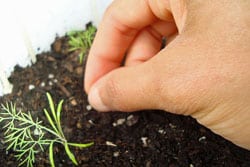

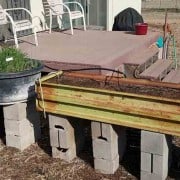
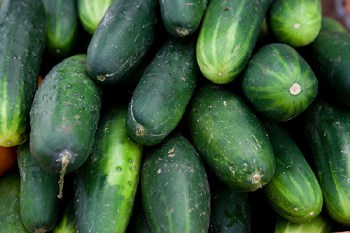
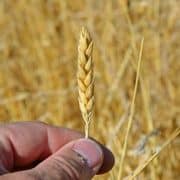
 2019 Terroir Seeds | Underwood Gardens
2019 Terroir Seeds | Underwood Gardens

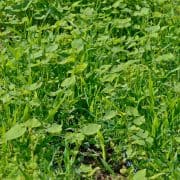
Cool. The above examples are really helpful. Any and all examples that people are doing would really help.
The above article states that spinach needs to be a direct sow. No one had ever told me that before. I grew a late summer crop of spinach last year. Around the start of July, I took my spinach seeds, put them between two damp paper towels, put the paper towel sandwich in the refrigerator. Once the seeds had germinated, I planted them in flats in my basement under grow lights. Once I had plants, I moved the flats outside. Then finally in the ground
Glad you liked it, Rick! We will be doing more articles with more focus on some of the techniques of the French Intensive Method.
Great article. I’m very interested in the French intensive method. My dad used it in our front yard when I was growing up and did manage to produce huge amounts of tomatoes, chard, lettuce, etc. Looking forward to reading more.
Thanks, Alida! We will be working on more articles in the near future.
Fantastic article. I now have a better understanding of succession planting and will be putting it to use in my home garden.
Thanks, Sharon! Glad it makes sense, please let us know how it works for you.
OK, I get it. The best time to start succession planting will be today. A great article, well written. And the best part…I’m using your seeds. Thank you, Pamela
Thanks Pamela! Let us know what you plant and how it grows.